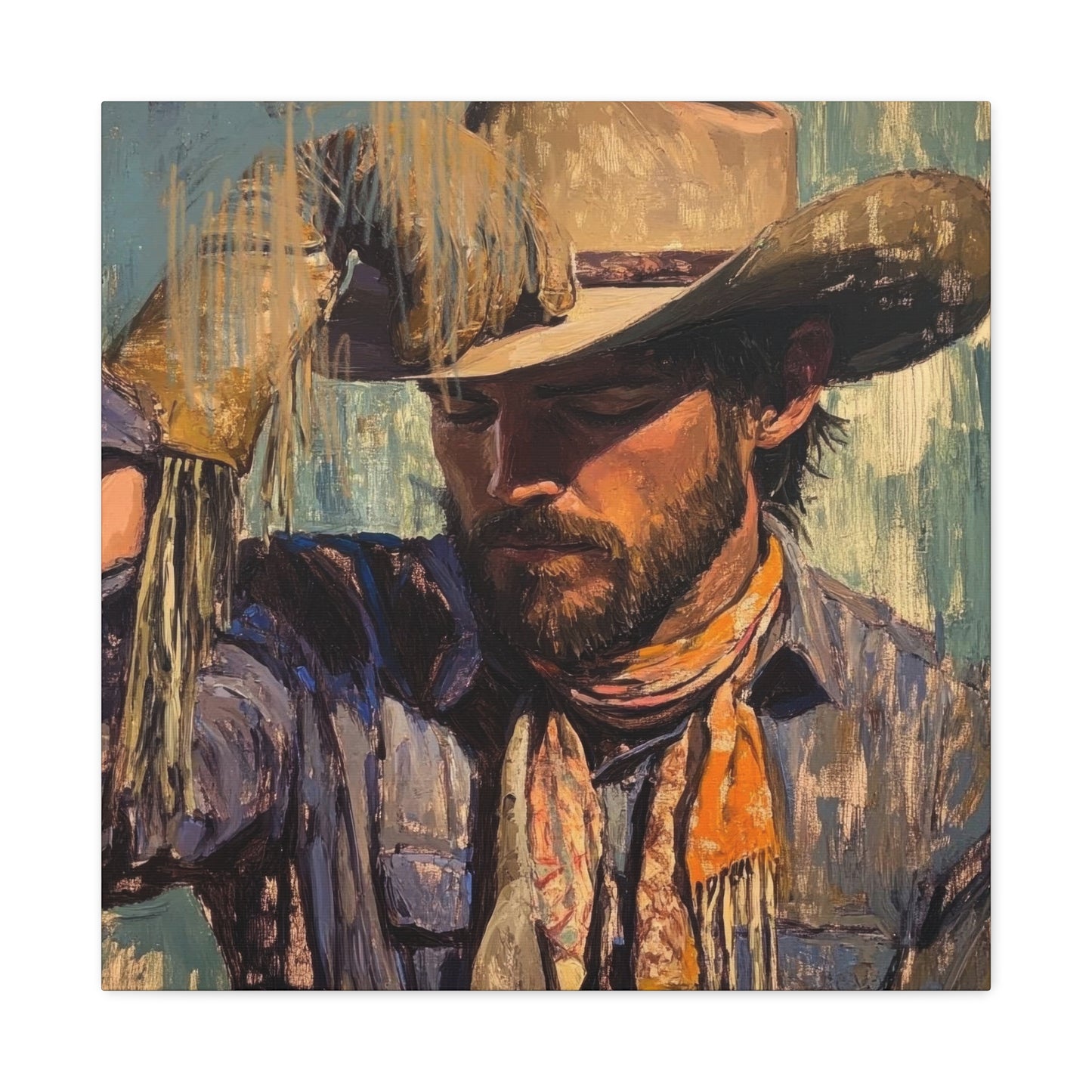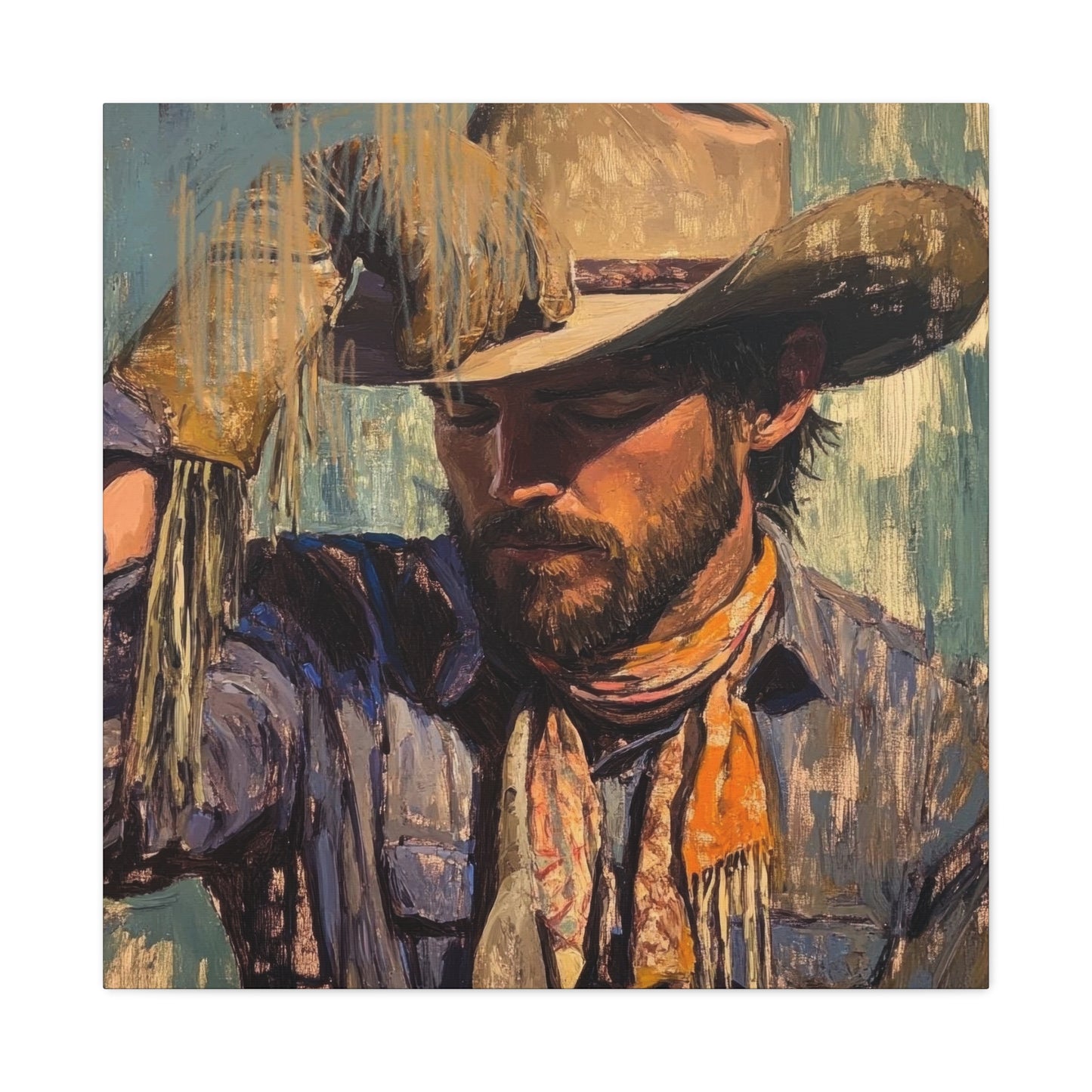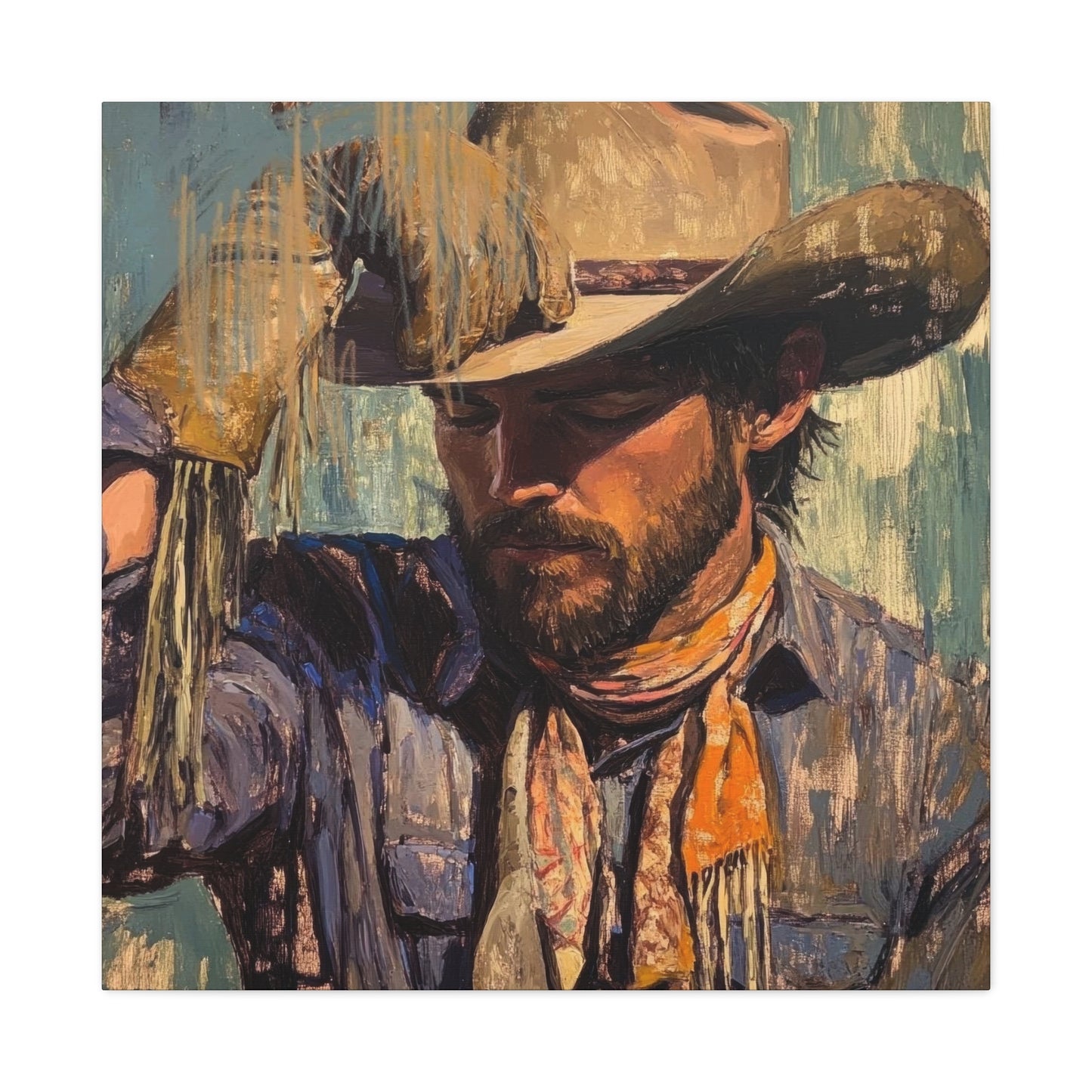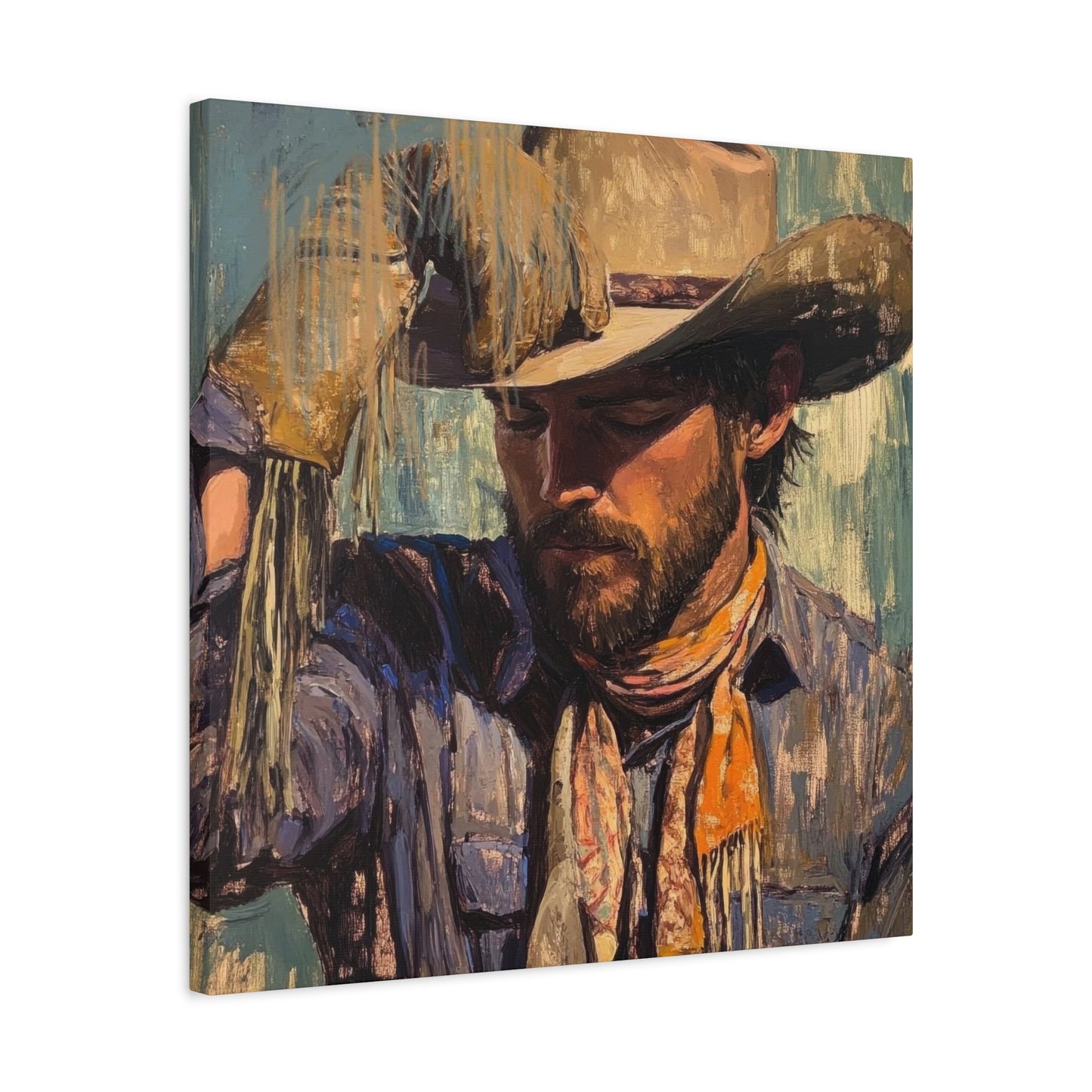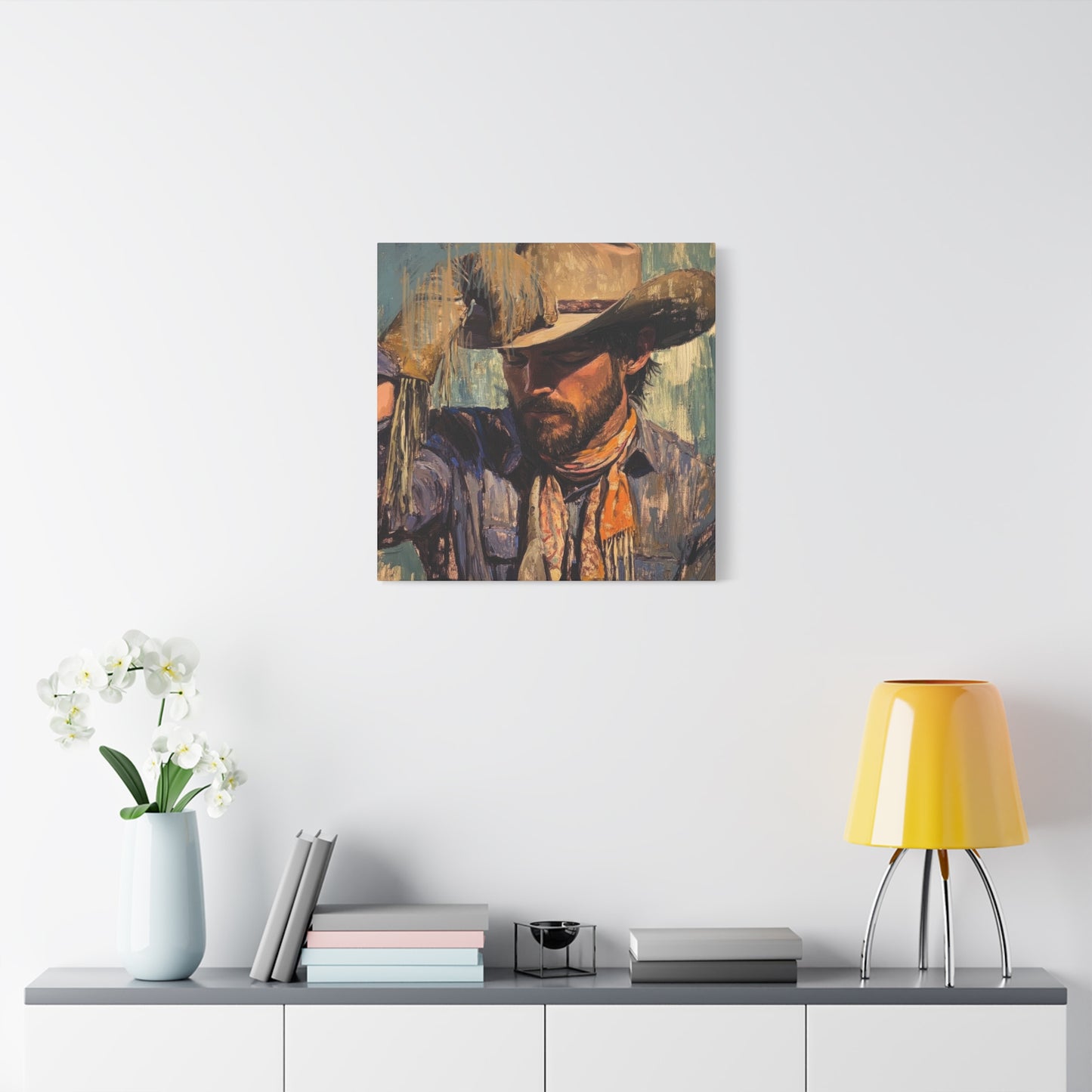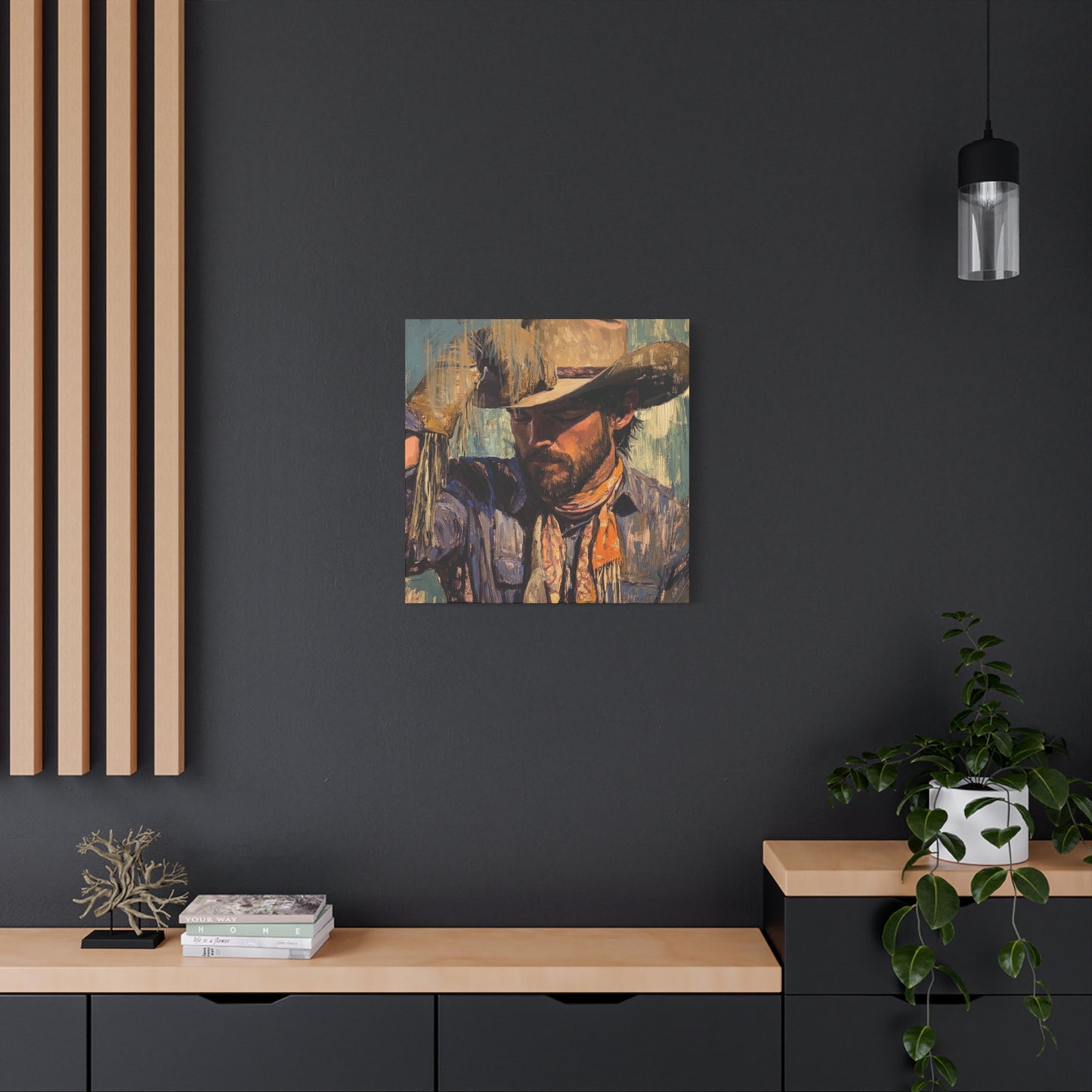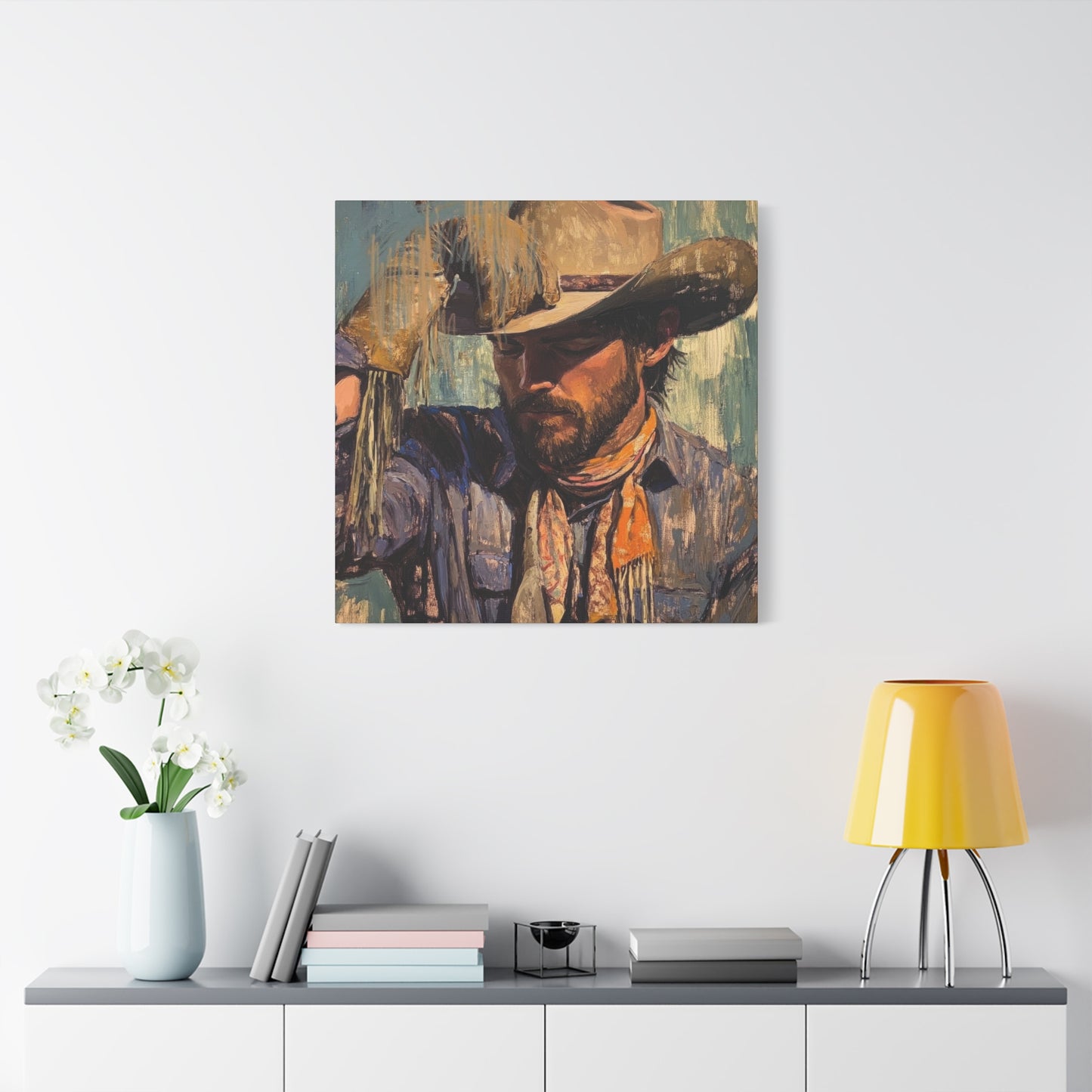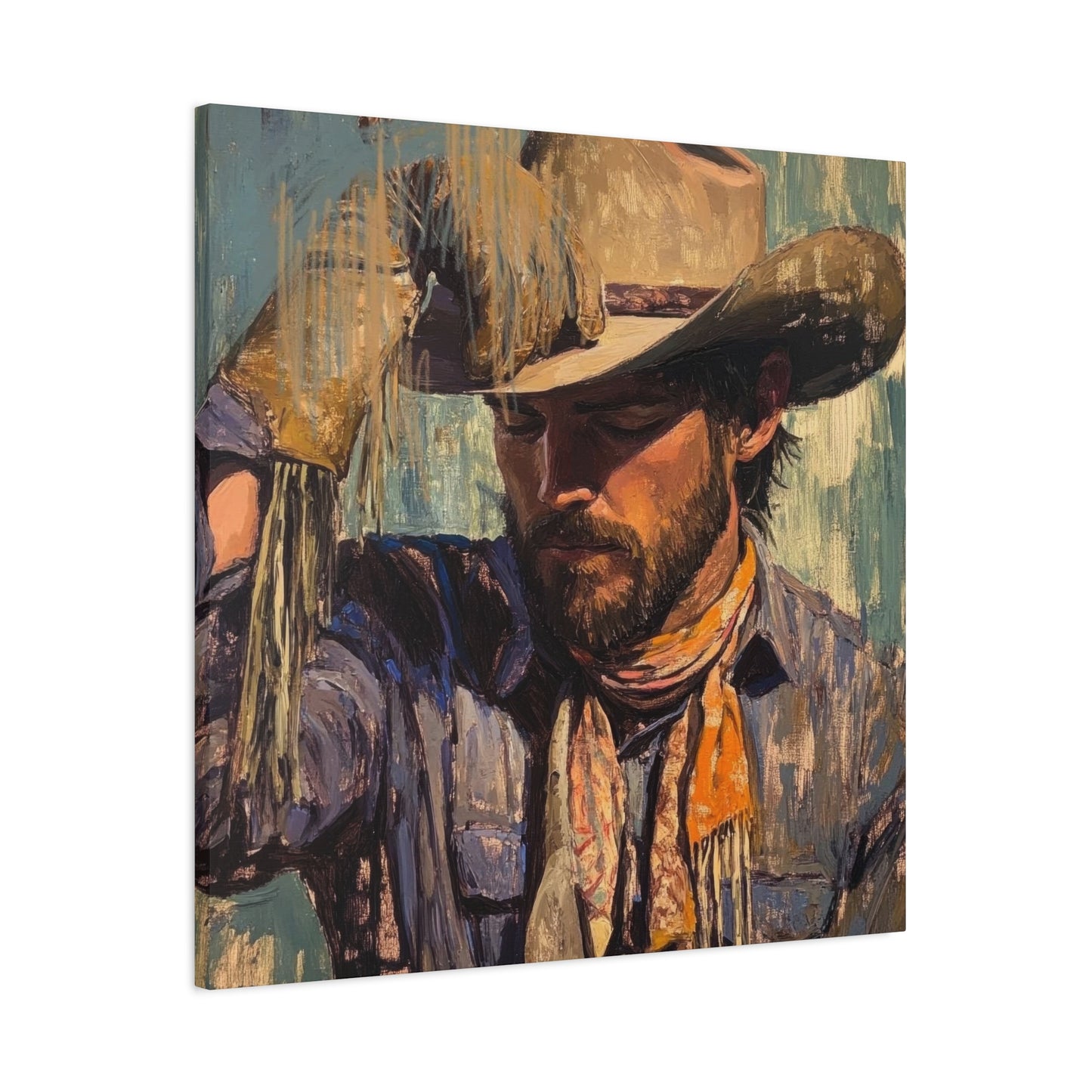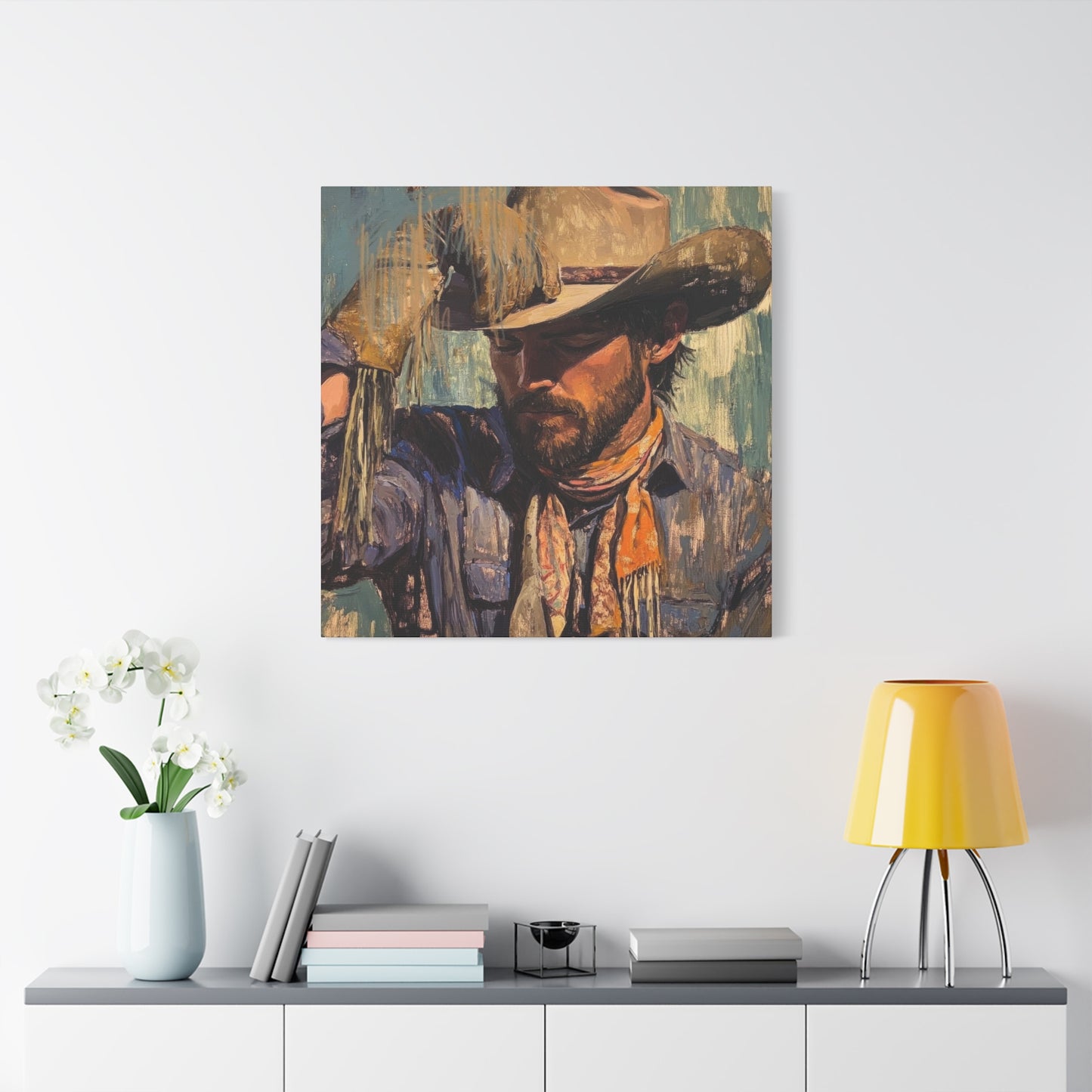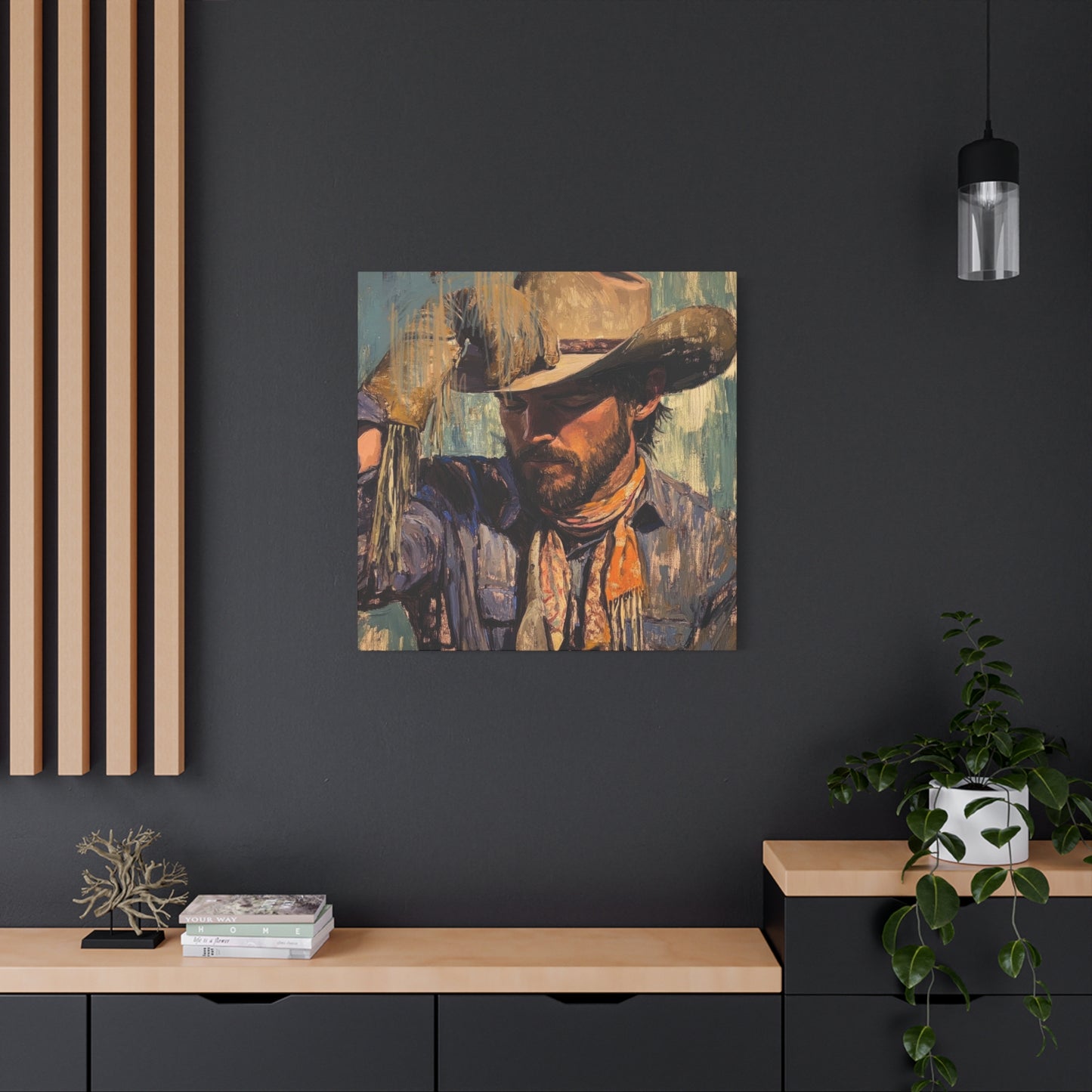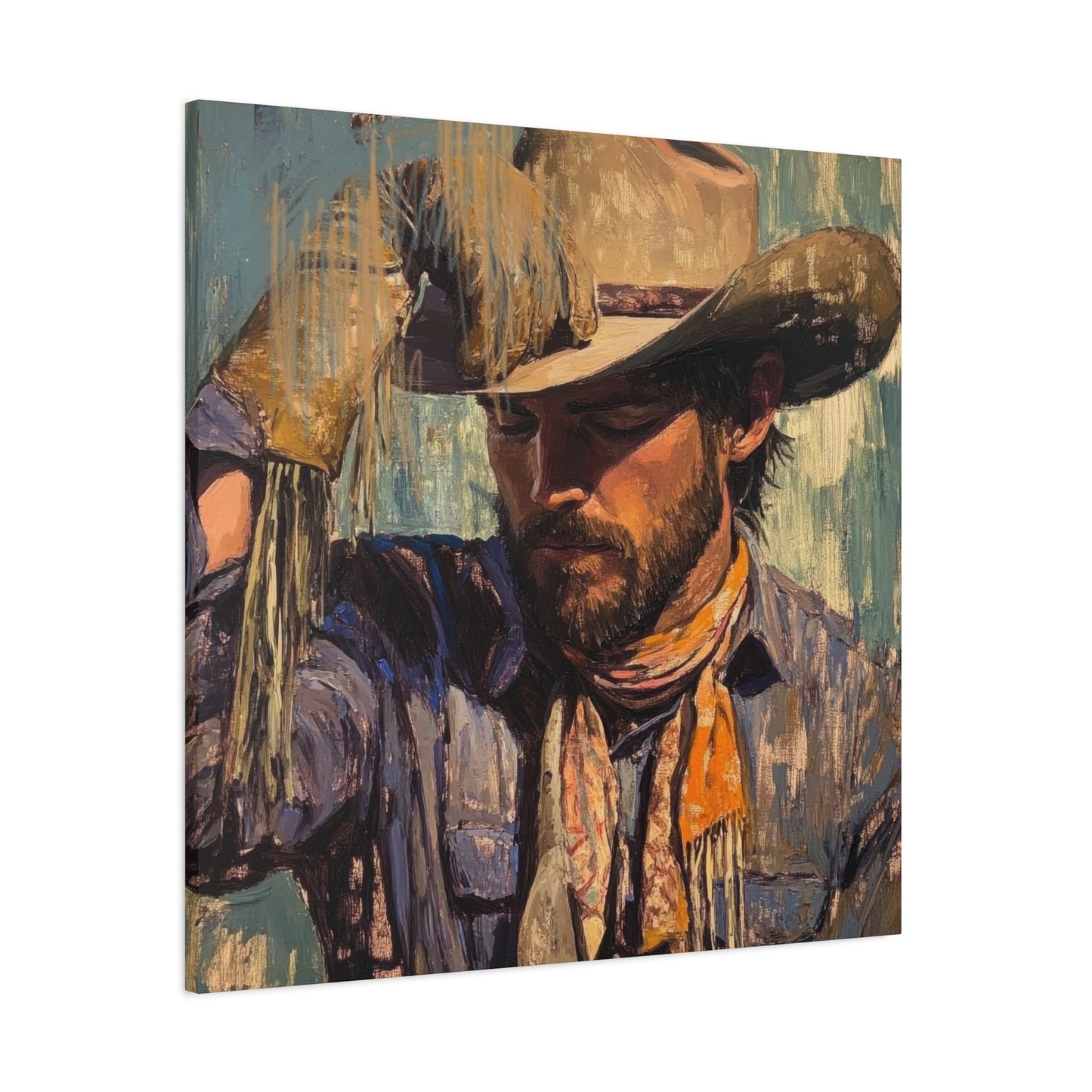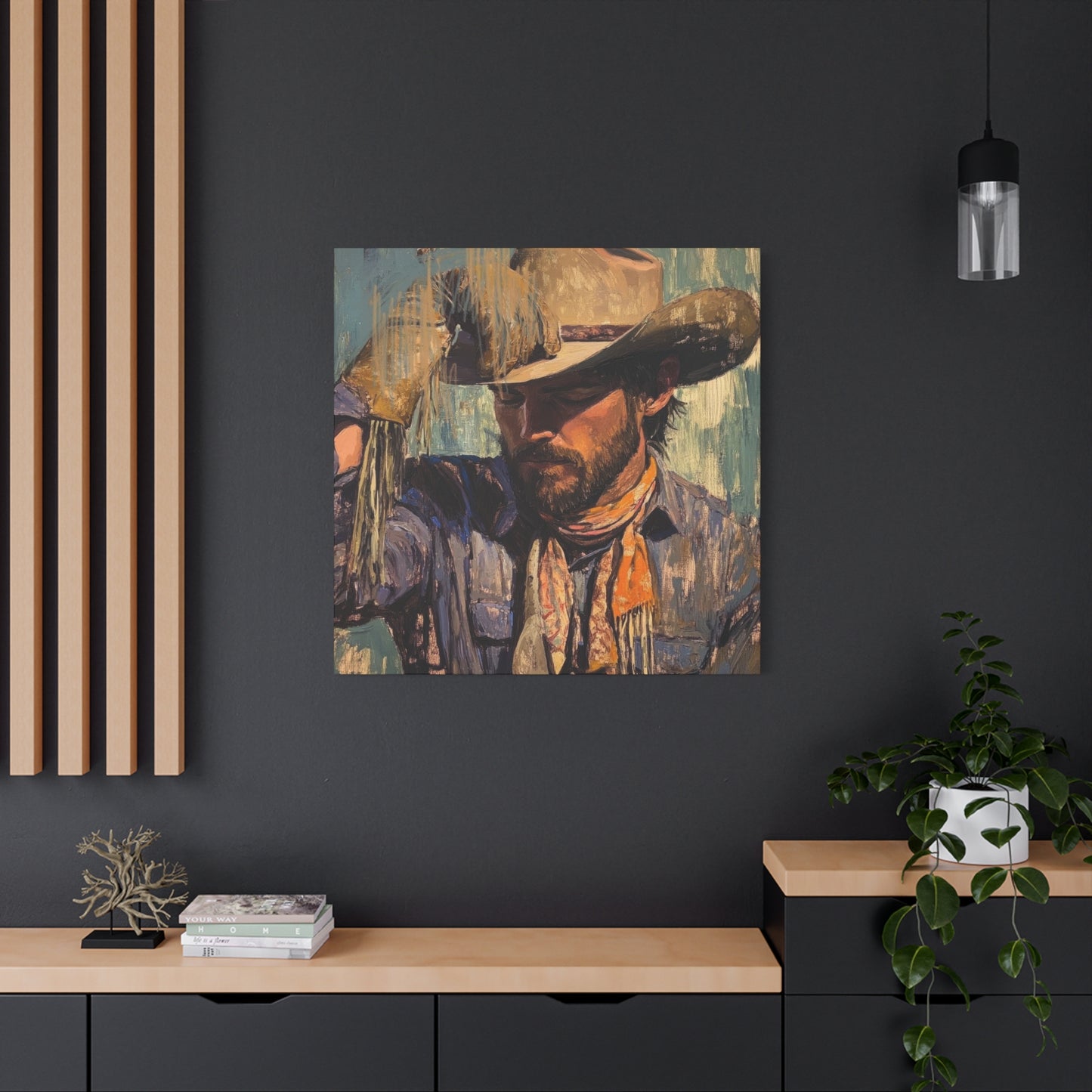Authentic Western Style: Cowboy Brushed Wall Art Canvas Prints for Your Living Space
The world of interior decoration has witnessed a remarkable resurgence of western-themed artwork, particularly cowboy brushed wall art canvas prints that capture the spirit of the American frontier. These decorative pieces bring a sense of adventure, rugged individualism, and timeless beauty to any living space. The brushed technique used in creating these canvas prints adds depth and texture that traditional printing methods simply cannot replicate, making each piece feel like an authentic work of art rather than a mass-produced decoration.
Western art has always held a special place in American culture, representing freedom, bravery, and the pioneering spirit that built nations. Cowboy brushed wall art canvas prints embody these values while offering modern homeowners an accessible way to incorporate this heritage into their contemporary living spaces. The brushing technique involves applying layers of paint or ink in deliberate strokes that create dimension and movement, giving the artwork a hand-painted appearance that elevates its aesthetic appeal significantly.
These canvas prints showcase various aspects of cowboy life, from solitary riders traversing vast landscapes to cattle drives across open plains, from rodeo action to quiet moments around campfires under starlit skies. Each image tells a story, inviting viewers to imagine themselves in those iconic scenes that defined an era. The artistic process behind these prints combines traditional western imagery with modern printing technology, resulting in pieces that honor the past while fitting seamlessly into present-day design schemes.
Popular Themes in Cowboy Canvas Wall Art
Cowboy brushed wall art canvas prints encompass a wide range of themes, each appealing to different aesthetic preferences and storytelling interests. Solitary riders crossing desert landscapes represent perhaps the most iconic western image, embodying themes of independence, journey, and man's relationship with nature. These compositions typically feature dramatic skies, expansive horizons, and lone figures silhouetted against natural grandeur, creating powerful visual statements that work well as focal points in larger rooms.
Cattle drive scenes capture the communal aspects of cowboy life, showing groups working together to move herds across challenging terrain. These action-oriented compositions convey energy and purposeful movement, making them excellent choices for spaces where activity and dynamism are desired. The dust, motion, and interaction between cowboys and animals create complex visual narratives that reward repeated viewing, as new details emerge with each examination.
Rodeo imagery brings excitement and drama to wall art, depicting moments of intense athletic competition where riders test their skills against powerful animals. Bull riding, bronco busting, barrel racing, and roping events all provide spectacular subject matter that translates beautifully to canvas prints. The tension and split-second timing inherent in rodeo events create compositions full of suspended action, freezing dramatic moments that convey both danger and mastery.
Campfire and ranch scenes offer quieter, more contemplative alternatives to action-oriented themes. These images might show cowboys gathered around evening fires, working in corrals, or tending to horses in golden morning light. Such scenes emphasize the lifestyle and daily routines of cowboy life rather than its dramatic highlights, appealing to those seeking more peaceful, reflective artwork. The warm lighting typical of these scenes creates inviting atmospheres that can soften and warm interior spaces.
Selecting the Perfect Size for Your Space
Choosing the appropriate size for cowboy brushed wall art canvas prints significantly impacts their effectiveness within interior spaces. Oversized prints make bold statements, dominating walls and serving as primary focal points around which other design elements orbit. These large-scale pieces work best in spacious rooms with high ceilings and minimal clutter, where their full impact can be appreciated without overwhelming the environment. Living rooms, great rooms, and master bedrooms often accommodate oversized canvas prints successfully.
Medium-sized prints offer versatility, working well in various locations throughout homes. They provide substantial visual interest without demanding the wall space or design commitment that larger pieces require. These middle-ground options suit dining rooms, hallways, home offices, and bedrooms, adapting to different decorating schemes while maintaining presence. Multiple medium-sized prints can be arranged in groupings, creating gallery walls that tell more complex visual stories than single pieces alone.
Smaller canvas prints serve specialized purposes, adding western touches to spaces where larger artwork would be inappropriate. Bathrooms, small bedrooms, breakfast nooks, and mudrooms can all benefit from compact cowboy-themed artwork that reinforces design themes without overwhelming limited square footage. These smaller pieces also work well when mixed with other artwork sizes in eclectic arrangements that create visual rhythm through varied dimensions.
When determining appropriate sizes, the viewing distance must be considered carefully. Artwork intended to be viewed from across large rooms can incorporate more detail and benefit from larger dimensions that remain visually compelling at distance. Conversely, pieces positioned where viewers will be closer should be sized to be fully appreciable from near range without requiring viewers to step back for proper perspective. The rule of proportions suggests that artwork should occupy roughly two-thirds to three-quarters of the available wall space for balanced, professional-looking installations.
Color Palettes That Define Western Canvas Art
The color schemes employed in cowboy brushed wall art canvas prints play crucial roles in establishing mood and ensuring compatibility with existing interior designs. Earth tones dominate western artwork, reflecting the natural landscapes that served as the backdrop for cowboy life. Rich browns, warm tans, dusty oranges, and sage greens create foundations that evoke desert terrain, prairie grasslands, and mountain ranges. These organic colors blend easily with many decorating styles, from rustic and southwestern to surprisingly modern and minimalist approaches.
Sunset and sunrise scenes introduce more dramatic color palettes, incorporating brilliant oranges, deep purples, vibrant pinks, and golden yellows that create striking visual impact. These warmer color schemes energize spaces, adding vitality and emotional warmth that can transform room atmospheres. The intense hues work particularly well in rooms where social interaction occurs, as they stimulate conversation and create inviting environments. However, these bolder palettes require careful coordination with surrounding furnishings to avoid color clashing.
Blue skies feature prominently in many western scenes, introducing cooler tones that balance warmer earth elements. The blues range from pale, almost white horizons to deep indigos in night scenes, providing variety within cohesive color stories. These cooler tones can help open up smaller spaces visually, creating illusions of greater depth and airiness. Artwork emphasizing blue skies pairs well with neutral furniture and metallic accents, creating sophisticated, contemporary western aesthetics.
Monochromatic and sepia-toned prints offer alternatives for those seeking subtler western touches. These limited-palette approaches create vintage, nostalgic feelings that complement both traditional and modern interiors. The reduced color complexity allows these pieces to integrate smoothly into spaces with established color schemes, providing thematic elements without introducing design complications. Black and white cowboy brushed wall art canvas prints possess timeless quality that transcends temporary design trends.
Integrating Western Art into Modern Interior Design
Successfully incorporating cowboy brushed wall art canvas prints into contemporary spaces requires thoughtful consideration of how traditional western elements interact with modern design principles. The key lies in finding balance between honoring the artwork's historical roots and ensuring it enhances rather than conflicts with current decorating trends. When done well, this integration creates unique, personalized spaces that feel both timely and timeless.
Minimalist interiors provide surprisingly effective settings for western canvas art. The clean lines and uncluttered surfaces characteristic of minimalism allow cowboy imagery to command attention without competing with busy surroundings. A single large-scale print on an otherwise bare wall creates dramatic focal points that exemplify minimalist principles while introducing organic warmth that prevents spaces from feeling sterile. The textural qualities of brushed canvas complement minimalism's emphasis on material authenticity and craftsmanship.
Industrial design schemes naturally accommodate western artwork, as both aesthetics celebrate functional beauty and honest materials. Exposed brick, metal beams, concrete floors, and leather furnishings all echo elements present in cowboy culture and imagery. Cowboy brushed wall art canvas prints enhance industrial spaces by introducing natural elements and historical context that soften harder industrial edges. The combination creates environments that feel both edgy and grounded, contemporary yet connected to heritage.
Transitional styles that blend traditional and contemporary elements provide ideal frameworks for western canvas art. These balanced approaches allow cowboy imagery to bridge old and new, serving as connecting visual elements that unify diverse design components. Pairing western prints with both antique and modern furnishings creates layered, collected looks that suggest rooms evolved over time rather than being decorated all at once. This approach feels authentic and personal rather than staged or overly designed.
Framing Options for Canvas Western Artwork
While many cowboy brushed wall art canvas prints are displayed as gallery wraps without additional framing, adding frames can significantly enhance presentation and protect artwork investments. Wooden frames complement western themes naturally, with options ranging from rustic barn wood to smooth, stained hardwoods. The frame choice should consider both the artwork's style and the room's existing woodwork, creating cohesive visual relationships between the print and its architectural context.
Distressed wood frames particularly suit western canvas art, as their weathered appearances echo the rugged aesthetics of frontier life. These frames can be achieved through various finishing techniques including wire brushing, staining with multiple tones, or applying antiquing glazes. The imperfect surfaces create casual, lived-in feelings appropriate for western themes while adding textural interest that complements brushed canvas techniques. Dark walnut, weathered gray, and natural pine finishes each create different effects worth considering.
Float frames create modern presentations that suspend canvas prints within frame boundaries, leaving visible gaps between artwork edges and frame interiors. This contemporary approach works well when integrating cowboy imagery into more modern spaces, as it signals artistic intention and curatorial sophistication. The separation created by floating also emphasizes the canvas texture and printed edges, drawing attention to the artwork's three-dimensional qualities. Metal float frames in bronze, copper, or matte black finishes particularly suit this application.
Ornate frames offer alternatives for more traditional or formal settings where western art serves as part of classical decorating schemes. While elaborate framing might seem at odds with cowboy imagery's inherent informality, carefully chosen ornamental frames can elevate canvas prints to fine art status. This approach works best with more painterly, artistically rendered cowboy scenes rather than photorealistic images. Gold leaf, carved wood, or richly finished frames in these applications create gallery-quality presentations.
Placement Strategies for Maximum Visual Impact
Strategic placement of cowboy brushed wall art canvas prints maximizes their decorative impact and ensures they integrate successfully into room designs. The traditional approach positions artwork at eye level, typically with centers between 57 and 60 inches from the floor, matching average human sight lines. This placement feels natural and accessible, allowing comfortable viewing without neck strain. However, furniture arrangements sometimes necessitate adjustments to these standard heights.
When hanging artwork above furniture, different rules apply. Canvas prints positioned over sofas should hang 6 to 12 inches above the furniture back, creating visual connection without excessive separation. The artwork width should ideally span two-thirds to three-quarters of the furniture width below, creating proportional relationships that feel balanced and intentional. Similar principles guide placement above beds, consoles, and other furnishings, though specific measurements may vary based on furniture heights and room proportions.
Creating gallery walls with multiple cowboy canvas prints requires careful planning to achieve cohesive, professional results. The arrangement should be planned on paper or using templates before any nails are driven. Various layouts work effectively, including symmetrical grids, organic salon-style arrangements, and linear progressions. The key is maintaining consistent spacing between pieces, typically 2 to 4 inches, creating visual unity while allowing individual pieces to be appreciated. Mixing sizes within gallery walls adds interest but requires thoughtful balancing to avoid chaotic appearances.
Lighting dramatically affects how canvas art appears and should be considered during placement planning. Natural light from windows can beautifully illuminate canvas prints but may cause fading over time if direct sun exposure occurs regularly. Positioning artwork on walls perpendicular to windows often provides good natural lighting without direct exposure concerns. Artificial lighting through picture lights, track lighting, or adjustable spotlights allows precise control over how artwork is illuminated, emphasizing textures and colors while creating focal points in room lighting schemes.
Western Art as Investment and Collectible Items
Cowboy brushed wall art canvas prints can represent more than mere decoration, serving as collectible items that may appreciate in value over time. Limited edition prints, numbered and signed by artists, carry greater collectible potential than open-edition reproductions. The smaller the edition size, the greater the potential value, assuming demand exists for the particular artist's work. Serious collectors research artists' reputations, exhibition histories, and market performance before making acquisition decisions.
Provenance documentation increases collectible value significantly. Certificates of authenticity, purchase receipts, artist signatures, and edition numbers all contribute to establishing artwork legitimacy and rarity. These documents should be preserved carefully alongside the artwork itself, maintaining clear ownership chains that support valuation during future sales. Detailed records of where and when pieces were acquired, along with any restoration or conservation work performed, provide comprehensive histories that serious collectors and appraisers value.
Market trends influence collectible western art values, with certain themes, styles, and artists experiencing periods of heightened demand. Classic representational western art tends to maintain stable markets, as its appeal crosses generational boundaries. Contemporary interpretations may experience more volatile appreciation, depending on broader art market trends and changing aesthetic preferences. Following auction results, gallery sales, and art market publications helps collectors understand current valuations and identify emerging opportunities.
Insurance considerations become important as collections grow in value. Standard homeowner policies may provide inadequate coverage for valuable artwork, requiring separate fine art policies or riders that specifically address canvas print collections. Professional appraisals establish baseline values for insurance purposes and should be updated periodically as market conditions change. Detailed photographic documentation of each piece, including close-ups showing condition details, supports insurance claims if damage or theft occurs.
Customizing Canvas Prints for Personal Expression
Many providers of cowboy brushed wall art canvas prints offer customization options that transform standard artwork into personalized expressions. Custom sizes accommodate unusual wall dimensions or specific design requirements, ensuring perfect fits within available spaces. While standard sizes offer cost advantages through economies of scale, custom dimensions provide flexibility that justifies premium pricing for discerning customers with unique needs or challenging spaces to fill.
Color adjustments allow prints to be modified for better coordination with existing interior designs. Subtle shifts in saturation, hue, or value can significantly impact how artwork interacts with surrounding colors without fundamentally changing the image. Some providers offer complete color customization, converting full-color images to monochrome, sepia, or other limited palettes. These modifications enable western artwork to integrate into color schemes where standard versions might clash or feel incompatible.
Text additions personalize cowboy canvas prints, incorporating names, dates, quotes, or locations that create meaningful connections between artwork and owners. Ranch names, family names, or significant dates can be integrated into compositions, transforming generic western scenes into family heirlooms. Typography choices should complement the artwork's aesthetic, with western-style fonts matching rustic imagery while more refined typefaces suit sophisticated interpretations. Placement requires careful consideration to ensure text enhances rather than distracts from the primary image.
Complete custom commissions represent the ultimate personalization, with artists creating unique pieces based on client specifications. These bespoke creations might incorporate specific landscapes, particular horse breeds, or family photographs transformed into western-style artwork. The commissioning process typically involves consultations to establish vision, preliminary sketches for approval, and multiple review stages before final production. While significantly more expensive than selecting existing designs, commissioned artwork offers incomparable personal significance and guaranteed uniqueness.
Seasonal and Holiday Western Decorating
Cowboy brushed wall art canvas prints offer versatile seasonal decorating options that refresh spaces throughout the year without requiring complete redesigns. Winter scenes featuring snow-covered landscapes, cowboys in heavy coats, or horses in winter pastures create cozy, seasonal atmospheres perfect for colder months. These prints can replace warmer season artwork temporarily or be added to existing displays, building layered looks that reflect changing seasons. The cool color palettes typical of winter scenes complement holiday decorations while maintaining western themes.
Spring and summer imagery emphasizing green pastures, blue skies, and vibrant wildflowers brings fresh energy to spaces after long winters. These lighter, brighter compositions reflect seasonal renewal and outdoor activities associated with warmer weather. Canvas prints showing cattle drives, open-range riding, or ranch work in golden sunlight celebrate the productivity and vitality of growing seasons. Such artwork particularly suits vacation homes, cabins, or seasonal residences where decorating changes mark transitions between occupancy periods.
Fall harvest themes incorporate rich autumn colors that coordinate beautifully with traditional Thanksgiving decorations. Cowboy scenes featuring amber grasslands, golden-hour lighting, or cattle roundups capture the season's warmth and abundance. The earth tones predominant in western art naturally complement fall decorating schemes, requiring minimal adjustment to feel seasonally appropriate. These prints work particularly well in dining rooms and gathering spaces where families celebrate harvest holidays.
Holiday-specific western artwork adds unique character to seasonal celebrations. Christmas scenes might feature cowboys decorating with rustic ornaments, snow-covered ranches, or western Santa imagery. These pieces provide alternatives to traditional holiday decorations for families wishing to maintain western themes year-round. Easter, Fourth of July, and other holidays also inspire western interpretations that allow themed decorating without abandoning overall design aesthetics. Rotating artwork seasonally keeps interiors feeling fresh and current while maintaining cohesive style.
Regional Variations in Western Artistic Styles
Cowboy brushed wall art canvas prints reflect diverse regional influences that shaped western culture across different areas. Southwest artwork emphasizes desert landscapes, adobe architecture, Native American cultural elements, and the distinctive light and color palettes of Arizona, New Mexico, and southern Colorado. These pieces often incorporate warm terracottas, turquoises, and burnt oranges that echo regional geology and traditional architecture. The vegetation in Southwest scenes features cacti, mesquite, and juniper rather than the grasses prominent in plains imagery.
Northern plains artwork captures the vast grasslands of Montana, Wyoming, and the Dakotas, emphasizing endless horizons, dramatic skies, and the cattle culture that dominated these regions. The color palettes tend toward cooler tones with more greens and golds reflecting prairie vegetation. Weather plays more prominent roles in northern plains imagery, with scenes depicting dramatic storms, harsh winters, and the resilience required to thrive in challenging climates. Rocky Mountain backdrops frequently appear, adding vertical drama to otherwise horizontal compositions.
Texas cowboy art possesses distinct characteristics reflecting the state's unique history and culture. Longhorn cattle feature prominently, as do references to the state's Spanish colonial heritage. The vegetation and landscapes of Texas vary dramatically from east to west, allowing artwork to showcase pine forests, coastal prairies, hill country, and western deserts all within the same regional category. Texas pride and independent spirit often manifest in artwork through symbolic elements like lone stars, Texas flags, or historical references to the Republic of Texas period.
California vaquero traditions, predating American cowboy culture, inspire artwork with distinctive Spanish and Mexican influences. These pieces often feature ornate tack, chaparreras, and riding styles that differ from northern cowboy approaches. The landscapes reflect California's geographic diversity, from coastal ranges to Central Valley grasslands to Sierra Nevada mountains. The colors tend to be somewhat softer and more varied than desert Southwest palettes, incorporating more coastal influences and Mediterranean qualities.
Combining Western Art with Other Design Elements
Successfully integrating cowboy brushed wall art canvas prints into complete interior designs requires thoughtful coordination with complementary elements. Western-themed furniture provides obvious partnerships, with leather sofas, rustic wood tables, and wrought iron accents reinforcing thematic consistency. However, western artwork need not be limited to thoroughly western-decorated spaces. Carefully selected pieces can serve as accent elements within eclectic designs that draw from multiple aesthetic traditions.
Textiles offer opportunities to reinforce or complement western artwork themes. Navajo-pattern rugs, cowhide throws, or leather pillows echo materials and motifs common in cowboy culture. However, subtler textile choices also work effectively, including solid colors pulled from artwork palettes or contemporary patterns that simply avoid clashing with western imagery. The key is creating visual conversations between artwork and surrounding elements without literal matching that can feel forced or thematic to the point of cliché.
Lighting fixtures can support western themes through material choices and design aesthetics. Wagon wheel chandeliers, antler light fixtures, and wrought iron lamps all possess western associations. However, more subtle approaches include choosing fixtures in materials like weathered metal, natural wood, or industrial styles that complement western artwork without overtly matching it. The lighting quality matters as much as fixture style, with warmer color temperatures generally flattering western art more than cool, blue-toned lighting.
Accessories and decorative objects personalize spaces and can either reinforce or provide counterpoint to western canvas art. Cowboy hats, horseshoes, vintage spurs, or leather-bound books directly support western themes. Alternatively, introducing elements from other design traditions creates layered, sophisticated looks that feel collected rather than decorated. The balance between thematic reinforcement and design diversity depends on personal preference and desired atmospheres, from thoroughly immersive western environments to subtle nods within predominantly contemporary spaces.
Digital vs Traditional Canvas Print Production
The evolution of printing technology has created distinctions between traditionally produced and digitally created cowboy brushed wall art canvas prints that affect quality, cost, and collectibility. Traditional production begins with physical artwork created through conventional painting, drawing, or printmaking techniques. These originals are then photographed or scanned for reproduction, maintaining direct connections to physical artistic processes. Many collectors prefer prints derived from traditional artwork, valuing the human craftsmanship and artistic skill involved in creating the source material.
Digital artwork creation employs graphics software to build compositions entirely within virtual environments. Artists use digital brushes, layers, and effects to produce images that may appear indistinguishable from traditionally painted works. The advantages include unlimited revision capability, perfect replication, and integration of photographic elements with painted components. However, some traditionalists argue that digitally created artwork lacks the authentic artistic merit of physical painting, though this perspective is gradually shifting as digital art gains acceptance.
Hybrid approaches combine traditional and digital techniques, perhaps starting with hand-sketched drawings that are scanned and then colored and refined digitally. Alternatively, artists might create digital bases that are printed and then enhanced with traditional paint applications. These middle-ground approaches attempt to capture benefits from both worlds, offering flexibility and efficiency from digital tools while maintaining physical artistic intervention that adds uniqueness and authenticity.
The printing process itself also varies in sophistication. Basic inkjet printing produces flat, uniform surfaces adequate for casual decoration but lacking depth and character. Enhanced giclee printing uses archival inks and precise color management to create museum-quality reproductions. Adding hand-embellishments through paint or texture medium applications further elevates prints, creating hybrid products positioned between pure reproductions and original artwork. Understanding these production distinctions helps consumers evaluate quality differences and pricing structures.
Building Collections Through Themed Series
Many enthusiasts move beyond single pieces to develop cohesive collections of cowboy brushed wall art canvas prints that tell broader stories or explore themes in depth. Series focusing on specific subjects like horse breeds, ranching activities, or regional landscapes allow collectors to build expertise while creating visually unified displays. The repetition of themes with variation creates visual rhythm and suggests curatorial intention rather than random accumulation.
Historical progression series document the evolution of western life across different eras, from Spanish colonial vaqueros through the open range period to modern ranching operations. These chronological collections possess educational value alongside aesthetic appeal, illustrating how cowboy culture and western landscapes changed over time. Such series work particularly well in spaces with multiple wall areas that can accommodate several related pieces visible simultaneously or in progression through connected rooms.
Artist-focused collections follow the work of particular creators whose styles or subjects resonate strongly with collectors. This approach builds deeper understanding of individual artistic visions while potentially increasing investment value as artists' reputations grow. Following specific artists also creates opportunities for personal relationships through gallery events, studio visits, or direct commissions. The consistency of working with single artists naturally creates unified collections with recognizable aesthetic coherence.
Seasonal or activity-based series explore specific aspects of western life in detail. A ranching work series might include pieces depicting branding, cattle drives, horse training, fence mending, and other characteristic activities. Seasonal series could showcase the same landscape or ranch scene through changing seasons, documenting how light, color, and atmosphere transform familiar subjects. These focused explorations create richly layered understandings of subjects while providing decorating flexibility through rotation.
Western Art in Commercial and Hospitality Settings
Cowboy brushed wall art canvas prints find significant applications beyond residential settings, enhancing commercial and hospitality environments with authentic western atmosphere. Restaurants, particularly steakhouses and western-themed dining establishments, use such artwork to establish ambiance and reinforce brand identity. The visual storytelling inherent in cowboy imagery supports dining experiences, creating contexts that enhance food enjoyment. Large-scale installations make dramatic statements in dining rooms while smaller pieces personalize private dining areas or bar spaces.
Hotels and resorts in western regions or those marketing western experiences rely heavily on authentic artwork to create sense of place. Guest rooms, lobbies, conference facilities, and common areas all benefit from cowboy canvas prints that immerse visitors in regional culture. The artwork communicates location and experience before guests even step outside, setting expectations and beginning their western adventures. Hospitality applications require particularly durable, fade-resistant prints capable of withstanding commercial environments' demands.
Corporate offices occasionally incorporate western art to reflect company values or regional identity. Businesses headquartered in western states might display cowboy imagery as cultural acknowledgment and employee morale enhancement. The values associated with western imagery including hard work, integrity, and perseverance align with many corporate missions, making the artwork serve symbolic as well as decorative functions. Executive offices, conference rooms, and reception areas provide appropriate locations for professional-quality cowboy canvas prints.
Medical and dental offices use western artwork to create calming, distraction-providing environments that reduce patient anxiety. The familiar, culturally comfortable imagery of cowboys and western landscapes offers visual engagement without controversial or potentially disturbing content. The storytelling aspect gives patients something to contemplate during waiting periods, potentially easing nervousness about upcoming procedures. Healthcare applications benefit from artwork's psychological impacts on stress reduction and mood improvement.
Environmental Considerations in Canvas Print Production
Growing environmental awareness influences how cowboy brushed wall art canvas prints are produced and marketed. Sustainable canvas materials derived from organic cotton, bamboo fiber, or recycled content appeal to environmentally conscious consumers. These alternative materials perform comparably to conventional cotton canvas while reducing environmental impacts through lower pesticide use, reduced water consumption, or waste stream diversion. Certifications from organizations like GOTS or OEKO-TEX provide independent verification of environmental and social responsibility claims.
Water-based inks represent more environmentally friendly alternatives to solvent-based systems traditionally used in some printing applications. These inks contain lower volatile organic compound levels, reducing air pollution and health risks for production workers. The water-based formulations perform well on canvas substrates, offering color quality and durability comparable to less environmentally friendly alternatives. As technology improves, water-based systems continue gaining market share in canvas print production.
Energy consumption during production affects overall environmental footprints. Printing facilities increasingly adopt renewable energy sources, energy-efficient equipment, and optimized production workflows that minimize waste. Some producers offset remaining carbon emissions through verified offset programs, achieving carbon-neutral production. These environmental commitments appeal to consumers seeking to minimize their purchases' ecological impacts while still enjoying quality artwork.
Packaging and shipping present additional environmental considerations. Minimalist packaging using recycled materials, eliminating unnecessary plastic components, and designing for efficient shipping dimensions all reduce environmental impacts. Some producers offer local pickup options or work with carbon-neutral shipping carriers to further reduce transportation footprints. End-of-life considerations encourage canvas recycling or repurposing rather than landfill disposal, though infrastructure for art material recycling remains limited.
Preserving Family Heritage Through Western Art
Cowboy brushed wall art canvas prints serve meaningful roles in preserving and celebrating family heritage, particularly for descendants of ranching families or those with western cultural connections. Displaying cowboy imagery acknowledges ancestral occupations and lifestyles, maintaining visual connections to family histories. These displays educate younger generations about their heritage while honoring the sacrifices, hard work, and achievements of previous generations who lived cowboy lives.
Custom canvas prints incorporating family photographs transform personal history into displayable art. Vintage photos of grandparents or great-grandparents working ranches, competing in rodeos, or simply living western lifestyles can be professionally enhanced, enlarged, and printed on canvas. The brushed technique adds artistic qualities that elevate snapshots to artwork status. These personalized pieces become irreplaceable family treasures carrying both aesthetic and sentimental value.
Historical ranch or homestead locations hold significance for many families, and commissioning artwork depicting these places creates lasting memorials. Even if properties have been sold or substantially changed, canvas prints preserve visual records of meaningful locations. Some families display series showing family properties across generations, documenting how places evolved and changed. These installations tell family stories through landscapes and structures rather than people alone.
Combining western artwork with genealogical displays creates rich family history presentations. Canvas prints of cowboy scenes can anchor walls alongside framed family trees, vintage photographs, and historical documents. This integrated approach contextualizes individual family stories within broader western culture and history. The artistic quality of canvas prints elevates entire displays, preventing them from feeling like mere historical collections by incorporating aesthetic elements alongside documentary ones.
The Role of Western Art in Children's Spaces
Cowboy brushed wall art canvas prints offer excellent decorating options for children's bedrooms, playrooms, and nurseries, introducing western themes that stimulate imagination while maintaining design sophistication. Unlike cartoon-based children's decor that quickly feels dated, quality western artwork grows with children, remaining appropriate from infancy through teenage years. The timeless nature of cowboy imagery provides decorating longevity that justifies investment in quality pieces.
Age-appropriate imagery selection matters when choosing western artwork for children's spaces. Younger children respond well to simpler compositions featuring single horses, friendly-looking cowboys, or clear narrative scenes. As children mature, more complex compositions with multiple figures, detailed landscapes, and subtle storytelling become appropriate. The artwork can support developmental stages, offering increasingly sophisticated visual information for growing minds to process and understand.
Educational opportunities abound with western artwork in children's spaces. The images prompt questions about history, geography, animal behavior, and cultural traditions, creating teaching moments. Parents can use the artwork as starting points for discussions about American history, environmental conservation, animal husbandry, or work ethics. Books about cowboys, horses, and western history naturally complement the visual environment, creating cohesive learning spaces.
Color considerations for children's rooms often emphasize either soothing palettes for sleep areas or energizing schemes for play spaces. Western artwork exists across this spectrum, from soft, peaceful landscape scenes perfect for nurseries to action-packed rodeo images suitable for active play areas. The natural color palettes predominant in western art generally avoid the garish primaries common in children's products, creating more sophisticated environments that adults also enjoy.
Celebrating Western Lifestyle Through Wall Art
For contemporary ranchers, rodeo participants, and western lifestyle enthusiasts, cowboy brushed wall art canvas prints provide authentic visual representations of their lived experiences. These individuals often possess deep appreciation for accurate depictions that respect working cowboy culture rather than romanticized fantasies. Artwork accurately portraying equipment, techniques, landscapes, and animal behavior resonates with those who understand these details from personal experience.
Professional rodeo competitors and amateur enthusiasts often display artwork depicting their specific events. Bull riders might choose dramatic action shots of riders on massive bulls, while barrel racers prefer images of the precise athleticism required in their sport. These personal connections transform artwork from general decoration into meaningful representations of personal passions and achievements. Some competitors commission custom pieces incorporating their own competition photos or specific achievements.
Working ranchers appreciate artwork showing daily activities and seasonal work cycles they experience firsthand. Pieces depicting branding, calving, hay harvesting, or fence repair acknowledge the less glamorous but essential aspects of ranch work often overlooked in popular western imagery. This authentic representation validates their lifestyles and occupations, celebrating work that increasingly few people understand or appreciate. The artwork serves as occupational pride statements similar to how professionals in other fields display credentials or achievement symbols.
Western heritage organizations, riding clubs, and cowboy action shooting groups use canvas prints to establish identity and atmosphere in clubhouses, event venues, and organizational headquarters. The artwork creates appropriate settings for gatherings, reinforcing shared interests and cultural commitments. Large-scale installations make impressive statements in entry areas or main halls, while smaller pieces personalize committee rooms or offices. These organizational applications often emphasize regional or historically significant imagery relevant to specific groups.
Gifting Western Canvas Art for Special Occasions
Cowboy brushed wall art canvas prints make memorable gifts for occasions ranging from housewarmings to milestone birthdays, offering substance and lasting impact that consumable gifts cannot match. The permanence of artwork means recipients will encounter the gift regularly, creating ongoing reminders of the giver's thoughtfulness. Quality canvas prints represent significant investments demonstrating genuine care and consideration beyond token gestures.
Housewarming gifts should consider recipients' decorating styles and existing color schemes when possible. Neutral palettes and classic subjects offer safe choices when specific preferences are unknown. Including gift receipts allows exchanges if size, color, or subject matter proves incompatible with recipients' spaces. Presentation matters, with quality wrapping or decorative boxes elevating the gifting experience. Some givers arrange professional installation services as part of the gift, ensuring proper hanging and positioning.
Retirement gifts for those leaving careers in ranching, agriculture, or western industries carry particular significance when incorporating appropriate imagery. Custom pieces featuring specific ranches, favorite horses, or career highlights create personalized tributes acknowledging professional accomplishments. These retirement gifts become treasured possessions during next life chapters, maintaining connections to careers and identities built over decades. The thoughtfulness required to create truly personalized pieces demonstrates respect and appreciation.
Wedding gifts of western canvas art suit couples with shared interests in western culture, horses, or ranch lifestyles. Romantic western imagery depicting couples on horseback, sunrise rides, or intimate campfire scenes celebrates partnership while reflecting shared values and interests. Personalization through text adding names and wedding dates transforms standard artwork into commemorative pieces specific to the couple. These gifts gain sentimental value over time, potentially becoming family heirlooms passed to future generations.
Anniversary presents mark relationship milestones with artwork symbolizing enduring love and partnership. Western themes of loyalty, partnership, and journey naturally parallel marriage symbolism. Silver or golden anniversary celebrations might incorporate artwork with complementary metallic frames or subtle silver and gold accents within compositions. The permanence of canvas art metaphorically represents relationship endurance, making it particularly appropriate for anniversary recognition.
Regional Authenticity in Western Canvas Imagery
Authentic representation of specific western regions requires attention to geographical, botanical, and cultural details that distinguish areas from one another. Discerning viewers recognize when imagery accurately reflects particular locations versus generic "western" scenes that could represent anywhere. This authenticity matters to those with personal connections to specific regions who appreciate accurate portrayals of familiar landscapes and cultural elements.
Vegetation serves as key identifier of regional authenticity. Saguaro cacti immediately establish Southwest locations, specifically Sonoran Desert regions, while their absence with prickly pear and ocotillo suggests Chihuahuan Desert settings. Pinyon pine and juniper indicate higher elevation plateau country. Cottonwood trees along watercourses, aspen groves in mountains, or vast grasslands without trees each signal different environments. Artists attentive to these botanical details create convincing, specific locations rather than imagined composite landscapes.
Geological features including distinctive rock formations, mountain ranges, and landforms provide additional regional signatures. The red rock country of southern Utah possesses unmistakable character, as do the badlands of South Dakota, the volcanic landscapes of northern New Mexico, or the granite peaks of Wyoming's mountain ranges. Artwork accurately depicting these features resonates with residents and visitors familiar with these places, creating recognition and emotional connections.
Architectural elements reflect regional building traditions and available materials. Adobe structures indicate Southwest locations, while log construction suggests mountain regions with timber resources. Barn styles, fence types, and outbuilding designs vary regionally based on climate, materials, and cultural influences. Attention to these details in background elements enhances overall authenticity even when structures aren't primary subjects. The cumulative effect of consistent regional details creates believable, specific places rather than generic western settings.
Creating Focal Points with Oversized Canvas Prints
Large-scale cowboy brushed wall art canvas prints create dramatic focal points that anchor rooms and establish design directions. These commanding pieces demand attention, serving as conversation starters and primary visual elements around which other design decisions orbit. The impact of oversized artwork transcends mere decoration, fundamentally shaping how spaces are experienced and remembered.
Selecting subjects appropriate for large-scale presentation requires considering viewing distances and compositional strength. Images with strong focal points, clear subjects, and uncluttered compositions generally scale up most successfully. Busy, complex scenes with numerous small details may become visually confusing at large sizes, while simple, powerful compositions gain impact through scale. Horizontal orientations suit placement above furniture or on wide walls, while vertical formats work for narrow wall sections or tall spaces.
Installation of oversized canvas prints requires careful planning and often professional assistance. The weight of large canvases necessitates proper hanging hardware including multiple mounting points, heavy-duty hooks, and potentially wall anchors into studs rather than drywall alone. Proper positioning ensures the piece hangs level and at appropriate height. Professional installers bring expertise, proper equipment, and insurance coverage protecting both artwork and walls during installation.
Lighting oversized artwork effectively requires more powerful or strategically positioned fixtures than smaller pieces need. The increased surface area demands sufficient illumination to remain visible without creating hotspots or glare. Track lighting with adjustable heads allows precise aiming, while picture lights sized appropriately for canvas dimensions provide focused illumination. Natural lighting from windows can beautifully illuminate large canvases during daytime while artificial sources handle evening visibility.
Balancing Traditional and Contemporary Western Aesthetics
Modern interpretations of cowboy brushed wall art canvas prints blend traditional western subjects with contemporary artistic approaches, creating fresh perspectives that appeal to broader audiences. This balance honors heritage while acknowledging current design sensibilities, making western art accessible to those who might find purely traditional approaches dated or overly nostalgic. The fusion creates bridge styles connecting past and present.
Abstract or impressionistic rendering of western subjects offers contemporary alternatives to photorealistic depictions. These artistic interpretations emphasize color, form, and emotion over literal representation, creating pieces that function as modern art while maintaining western identity. The loosened details allow viewers to project their own interpretations onto scenes, creating more personal, subjective experiences. These approaches particularly suit contemporary interiors where traditional realistic artwork might feel incongruous.
Minimalist western art strips scenes to essential elements, eliminating extraneous details in favor of simplified compositions emphasizing negative space and clean lines. A single cowboy silhouette against empty sky, a lone horse in vast whiteness, or abstracted landscape forms create powerful statements through restraint rather than elaboration. This aesthetic aligns perfectly with modern minimalist interiors while maintaining clear western identity through subject matter and symbolic elements.
Mixed media approaches combining photography, painting, graphic elements, and digital manipulation create layered contemporary western artwork. These pieces might overlay vintage photos with painted elements, combine realistic and abstract passages within single compositions, or integrate text and imagery. The eclecticism reflects contemporary art trends while the western subjects provide accessible, culturally resonant content. These hybrid pieces particularly appeal to younger audiences accustomed to digital image manipulation and layered visual information.
Western Art in Vacation Homes and Second Residences
Vacation properties in western regions provide ideal settings for cowboy brushed wall art canvas prints, establishing sense of place and enhancing escape-from-routine experiences. The artwork helps transform houses into homes, creating welcoming environments that feel intentional rather than temporary. For properties used seasonally, the permanent nature of canvas installations provides continuity between visits, maintaining character during unoccupied periods.
Coastal vacation homes in California, Oregon, or Washington can incorporate western themes alongside nautical elements, acknowledging regions' ranching heritage while recognizing coastal locations. The mixture creates distinctive regional identity reflecting the full character of the areas. Similarly, mountain retreats in Colorado, Montana, or Idaho benefit from western artwork depicting high country ranching, packing trips, or mountain cowboy culture specific to elevated regions.
Furnishing vacation homes often involves different considerations than primary residences, with emphasis on durability, easy maintenance, and guest comfort over cutting-edge design trends. Western canvas prints align perfectly with these priorities, offering timeless appeal unlikely to feel dated, durability through quality construction, and universal accessibility through culturally familiar imagery. The artwork requires minimal maintenance while substantially enhancing aesthetic appeal.
Rental properties benefit from western artwork that establishes character and memorable identity. Distinctive decor differentiates properties in competitive vacation rental markets, with cohesive western themes creating marketable uniqueness. Quality artwork appears in listing photos, helping attract bookings from guests seeking authentic western experiences. The investment in good artwork pays returns through higher booking rates, premium pricing, and positive reviews mentioning ambiance and attention to detail.
The Influence of Western Films on Canvas Art
Western cinema profoundly shaped popular perceptions of cowboy life and influenced visual representations in cowboy brushed wall art canvas prints. Iconic films created collective visual vocabulary defining how cowboys, landscapes, and western life appear in popular imagination. Artists drawing on these cinematic influences tap into deeply embedded cultural imagery that resonates across generations.
The golden age of Hollywood westerns established aesthetic conventions still influencing artwork today. The dramatic lighting, epic landscapes, and heroic compositions of directors like John Ford created templates for visual storytelling. Monument Valley's distinctive buttes became synonymous with western imagery through repeated appearance in classic films. Contemporary canvas art often references these cinematic aesthetics, creating artwork that feels simultaneously historical and familiar.
Spaghetti westerns introduced grittier, more morally ambiguous perspectives that expanded western visual language. The harsh desert settings, extreme close-ups, and operatic violence of these European-produced films created distinct aesthetics. Some contemporary western artwork draws on this influence, creating edgier, more stylized pieces that differ from traditional romanticized approaches. The influence demonstrates western art's evolution and diverse interpretational possibilities.
Modern western films continue shaping artistic approaches through their cinematography and storytelling. Contemporary films often emphasize landscape grandeur, intimate character moments, and historically accurate details. These influences appear in canvas art emphasizing environmental beauty, focusing on individual cowboys rather than large-scale action, or incorporating more authentic period details. The ongoing dialogue between cinema and static art enriches both mediums.
Conclusion:
Cowboy brushed wall art canvas prints continue captivating audiences through their unique combination of historical significance, artistic merit, and emotional resonance. These pieces bridge past and present, connecting contemporary viewers with heritage and values that remain relevant despite dramatic cultural and technological changes. The enduring appeal demonstrates that certain themes and aesthetics transcend temporary trends, maintaining significance across generations.
The versatility of western canvas artwork allows integration into remarkably diverse interior design contexts. From thoroughly traditional western-themed spaces to contemporary minimalist environments, from rustic cabins to sophisticated urban apartments, cowboy imagery adapts and enhances varied settings. This flexibility ensures continued relevance as decorating styles evolve and personal tastes develop over time. Quality pieces purchased today will remain appropriate and attractive for decades, making them genuine investments rather than disposable decorations.
The craftsmanship involved in producing quality cowboy brushed wall art canvas prints deserves recognition and appreciation. From initial artistic creation through printing technology, material selection, and finishing techniques, multiple skilled professionals contribute expertise to final products. Understanding the processes and care involved helps consumers appreciate what they're purchasing and justifies appropriate investment in quality over cheap alternatives that may initially appear similar but lack substance and longevity.
Personal connections formed with western artwork often deepen over time as pieces become integrated into daily life and associated with memories, experiences, and life stages. A canvas print purchased during a memorable vacation may forever evoke those travel experiences. Artwork inherited from family members carries additional sentimental weight beyond aesthetic value. Even pieces selected simply for their visual appeal often develop personal significance through years of daily viewing.
The cultural importance of preserving and celebrating western heritage through artwork extends beyond personal decoration to broader social functions. These pieces maintain visual connections to formative periods of American history, ensuring younger generations remain aware of how their nation developed and what values guided earlier Americans. In an increasingly globalized, digital world, tangible connections to specific cultural heritage become more rather than less important for maintaining identity and continuity.
Educational values embedded within western canvas artwork provide ongoing learning opportunities for viewers of all ages. Children encountering these images develop curiosity about history, geography, and different ways of life. Adults gain appreciation for periods and lifestyles different from their own experiences. The artwork prompts questions, investigations, and deeper understanding, functioning as visual educators supplementing formal schooling and media consumption.
Environmental themes present in much western artwork gain contemporary urgency as climate change, habitat loss, and environmental degradation threaten landscapes depicted in these pieces. Canvas prints showing pristine wilderness, abundant wildlife, and functioning ecosystems serve as reminders of what we risk losing and motivation for conservation efforts. The beauty captured in these artworks argues eloquently for protecting natural heritage for future generations to experience directly rather than only through artistic representations.

















